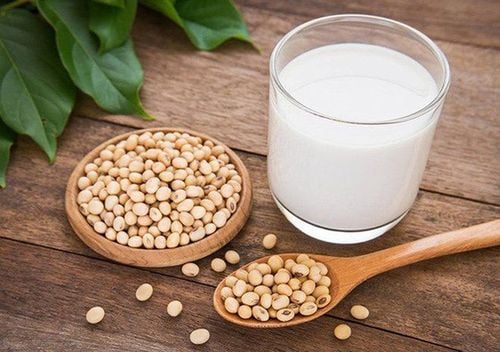This is an automatically translated article.
Newborns should start solids when they are about 6 months old. At this point, the child can sit up and no longer has the reflex to push food out of his mouth. Weaning means that parents give their children foods other than milk, solid foods and pellets. So, should you breastfeed your baby after solids?
1. Learn about the baby's weaning process
Weaning does not mean that the baby will stop breastfeeding completely. Weaning begins when the baby can get other foods besides breast milk. The process of weaning will end when the baby is completely no longer breastfed. Mothers may decide to stop breastfeeding when their baby is 6 or 12 months old, or even before that. Some moms may find themselves thinking about weaning and introducing solids as they prepare to return to work. In contrast, babies can even start solids before their mother is ready, but this is less common.
Medical organizations around the world agree that babies should be exclusively breastfed until they start eating solid foods at about six months. Breastfeeding is best continued while introducing solids until at least 12 months. Some of the health benefits for children when weaning at the right age are recommended as follows:
Reduce the risk of gastrointestinal infections Limit the risk of food choking into the airways Help the digestive system and kidneys become more mature Reduce risk of allergies such as asthma and eczema Mothers shouldn't be too worried about when to start introducing solids to their babies. Children will give us hints that they are ready for solid foods when they show the following signs:
The child can sit up firmly The tongue thrust reflex appears to bring food out The child can chew the child can Pick up food and put it in your mouth To start introducing solids safely and effectively, parents should keep the following in mind:
Make sure everything used to feed your baby is clean Start by feeding your baby. eat small amounts, one or two teaspoons of food per day Crush or use a blender to make food and mix it with expressed breast milk or cooled boiled water Serve when baby is relaxed Cook thoroughly food, let it cool and try before giving it to your baby Feed at your baby's pace and allow them to get used to different tastes and textures Don't reuse leftovers Don't add food to the bottle baby's milk as this can damage teeth and cause choking

Có nên cho trẻ bú sau khi ăn dặm không mẹ cần tham khảo quá trình ăn dặm của trẻ
2. Some complementary foods for children in the process of weaning
Suitable foods for baby's weaning include:
Baby rice Mashed carrots, potatoes or broccoli Mashed fruits like bananas, stewed apples or pears Beef, lamb or chicken Accordingly, dad Parents need to be careful not to add sugar or salt to their baby's food. When babies are 6 months old or older, parents can introduce new foods such as:
Bread, pasta and breakfast cereals that contain gluten Babies get used to many different tastes from an early age. However, there are some foods you should not give your baby such as:
Salty foods because your baby's kidneys can't cope with salt Honey, as it is sugar and not suitable for babies under one year of age. age Peanuts Unpasteurized cheese Raw eggs Sugary foods
3. How long should the baby be breastfed?
Some people mistakenly believe that starting solids means stopping breastfeeding altogether. Sometimes mothers mistakenly believe that they need to stop breastfeeding when it is not necessary. Breastfeeding is a great way to maintain intimacy as your baby grows. If a woman has to return to work, a woman can express milk at work and set up feeding times directly from the breast at special times such as the beginning of the day and the end of the day. Or if you have to go on a business trip, you can have milk ready to go. When you are sick, you do not always need to stop breastfeeding, but consult your doctor about this.
Starting weaning is the time to gradually reduce the amount of breast milk provided to the baby but not completely cut it off. Ideally, weaning should begin at 6 months of age and continue until breast milk is completely replaced by solid foods. Many experts recommend that mothers exclusively breastfeed their babies for the first 6 months and possibly continue continuously for the first 2 years of a baby's life before weaning completely.
If you feel you can't continue breastfeeding until 6 months and want to try active weaning, start by cutting out one feed per day and replacing it with a bottle of formula. Ideally, cut out the mid-day feeding, pay attention to good hygiene when preparing food. Your baby may be getting less breast milk from the bottle at first, and don't force them to drink more milk than they need. It is possible that a woman will notice that her breasts are full and tender as her body adapts to producing less milk. If this becomes uncomfortable, try expressing some breast milk to ease the discomfort without stimulating your body to produce more.
As your baby begins to be offered solid foods around six months, you will find that her feedings naturally become less frequent over time. Within a year, your baby will likely have several fewer feeds per day and be supplemented with healthy meals and snacks. However, if you want to cut even more, do it gradually. Cow's milk should only be given to babies until they are at least one year old.

Nên cho trẻ bú đến khi nào có liên quan đến quá trình ăn dặm của trẻ
In addition, if you choose to let your baby decide when to stop breastfeeding naturally, the weaning process can happen more slowly and gradually. Over the months, your baby's feeds will likely be shorter and less frequent. At this time, the woman's body will have plenty of time to adapt, so there will be no uncomfortable engorgement. However, you may find it difficult emotionally, so make time for moments of cuddling and bonding with your baby.
4. Weaning and maternal health
When stopping breastfeeding, mothers should do it slowly. This way, the baby can gradually get used to the change in habits, diet and the woman's body also has time to get used to not making milk.
If the decision to wean is on the mother's part and begins before the baby is 6 months old, you may need to provide comfort by continuing to breastfeed with a bottle or cup. The mother's affection for the baby is maintained without dependence on the mother's breast. The method of weaning and starting solid foods can be chosen differently from family to family, which depends most on the age of the child. By 7-8 months, babies can learn to drink from a cup.
A baby's age also determines whether breast milk should be replaced with infant formula or cow's milk. Babies under 12 months shouldn't drink cow's milk, so they need to be replaced with formula milk.
For mothers, if they stop breastfeeding quickly, their breasts can become engorged and very uncomfortable. To prevent engorgement, you may need to actively express just enough milk to be comfortable. If too much is expressed, milk will still be produced and the weaning process may take longer. Some mothers choose to switch from daily to every few days to avoid engorgement, before stopping breastfeeding altogether. After your baby stops nursing, you may experience a lump in your breast for 5-10 days. A painful lump may indicate a blocked milk duct or suggest mastitis. Then try massaging the lumps or expressing a small amount of milk. This can reduce the size and discomfort.
In case the breast lumps are painful and do not go away after 24 hours or the mother begins to feel flu-like symptoms, see a doctor as soon as possible. If your baby is older than six months and growing well, you may decide to wean at night while still breastfeeding during the day. On the other hand, if you're comfortable with night feedings, there's no rush to get rid of night feeds. You can choose what works best for you and your baby.
For more nutritional knowledge and child care for each age, parents should regularly visit the website vimec.com and make an appointment with the leading doctors, pediatric and nutrition experts of the National General Hospital. Vinmec when needing advice on children's health.













